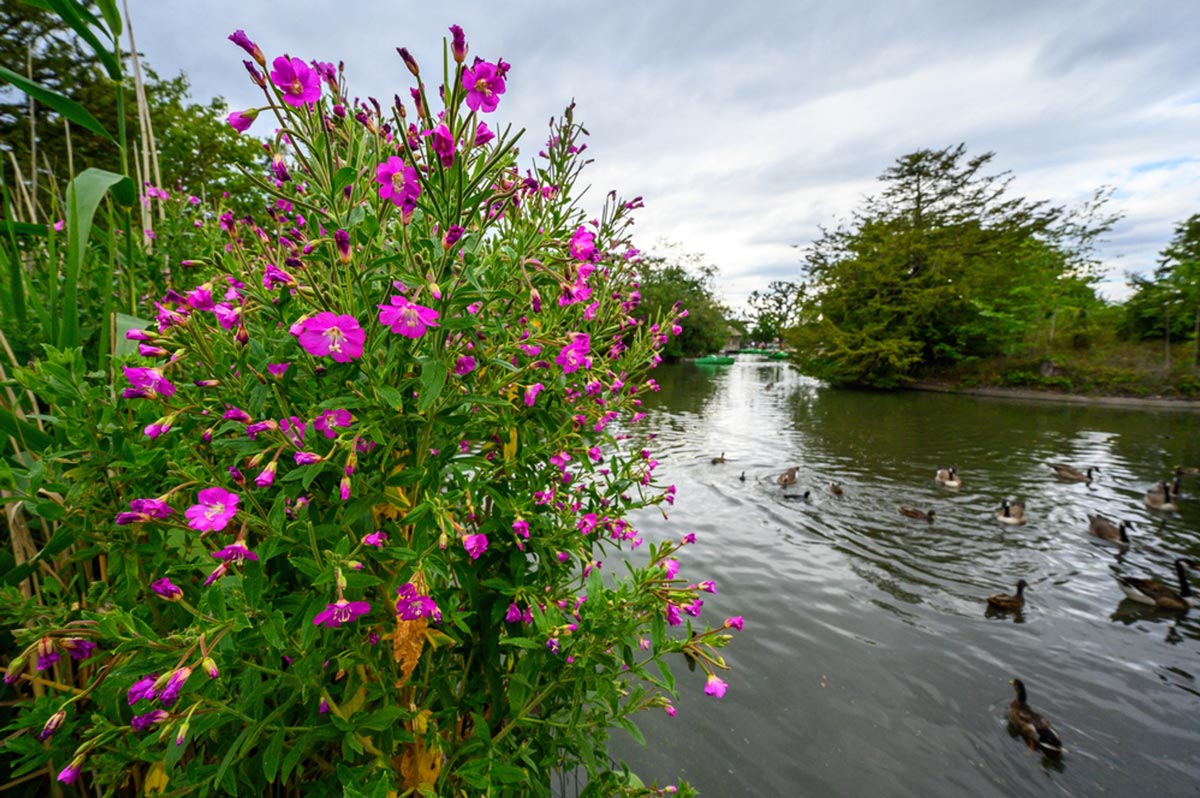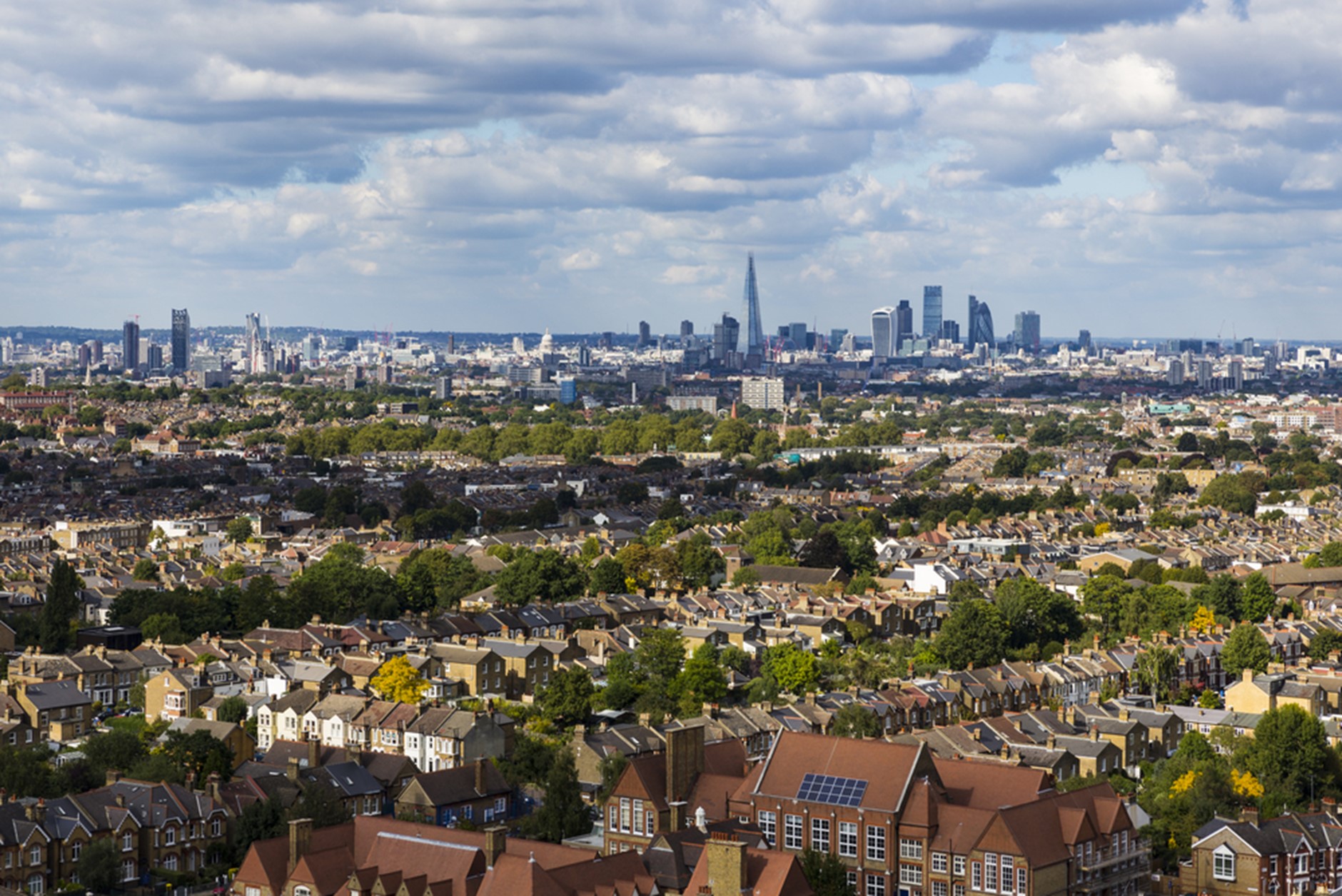
Dulwich, located in the southern part of London, offers a mix of peaceful living and urban convenience. It's surrounded by neighbourhoods like Herne Hill, Crystal Palace, and East Dulwich, each contributing to its distinct character. With tree-lined streets, local shops, and cultural attractions, Dulwich has become a popular spot for both residents and visitors.
This guide explores various aspects of Dulwich, from its parks and schools to its markets and arts scene. Whether you're interested in properties, local amenities, or the area's cultural heritage, this guide provides practical insights to navigate Dulwich's unique charm.

According to Rightmove, residential properties in Dulwich had an overall average price of £730,559 over the last year.
The property market in Dulwich is driven by several key factors. Firstly, its prime location in south London offers proximity to the city centre and easy access to the River Thames. The area benefits from excellent transportation options, with convenient train stations at East Dulwich and West Dulwich, as well as bus and tram links, ensuring reliable and robust transport for residents.
Dulwich's reputation for exceptional schools, both state and private, makes it a sought-after destination for families seeking quality education for their children. The wide range of amenities adds to the area's appeal, with a diverse variety of shops, restaurants, bars, and parks, alongside attractions like Dulwich Picture Gallery and Dulwich College, contributing to a well-rounded lifestyle for residents.
The cohesive and dynamic community spirit in Dulwich is another influential factor. A mix of residents from various backgrounds creates a strong sense of belonging and interaction. Moreover, the area's investment potential is reinforced by its consistent upward trajectory in property prices, solidifying its position as an attractive option for property investment.
This picturesque neighbourhood is renowned for its tree-lined streets, green spaces, and cultural treasures. Whether you're a history enthusiast, an art lover, or simply someone in pursuit of refined living, Dulwich offers a lifestyle that seamlessly fuses tradition and diversity.
The most common property types in Dulwich are houses, with a mix of detached, semi-detached, and terraced houses. There are also a number of flats and apartments, especially in the East Dulwich area. Many residences feature stunning period details, including ornate mouldings, high ceilings, and fireplaces, reflecting the neighbourhood's rich history.
For those seeking tranquillity amidst urban life, Dulwich offers a plethora of green spaces. Dulwich Park, with its serene lakes and lush landscapes, provides the perfect setting for leisurely strolls or picnics. The expansive Dulwich Woods offers a haven for nature enthusiasts, while the quaint Dulwich Village radiates a distinct village-like charm.
Architectural diversity is a hallmark of Dulwich. The neighbourhood showcases a harmonious blend of Georgian, Victorian, and Edwardian architecture, each contributing to the area's character. The Dulwich Estate, characterised by its distinctive red-brick buildings, imparts a unique identity to the surroundings.
With its architectural grandeur, cultural allure, and serene surroundings, this distinguished neighbourhood beckons those who appreciate the art of living well.
Properties for sale in Dulwich
The Dulwich Picture Gallery is a renowned art institution that holds a remarkable collection of European Old Master paintings, sculptures, and decorative arts. Established in 1811, it is known for being the first purpose-built public art gallery in the world. The gallery's collection spans from the 17th to the 19th century and features notable works by artists like Rembrandt, Rubens, Gainsborough, and Canaletto. With a focus on education and engagement, the Dulwich Picture Gallery offers a diverse range of exhibitions, events, and programs for visitors of all ages, fostering a deeper appreciation for art and culture.
The architectural elegance of the gallery's building, designed by Sir John Soane, adds to the institution's charm. The structure itself is a work of art, blending classical and neoclassical styles to create an inviting and harmonious space. The gallery's tranquil setting within landscaped gardens further enhances the visitor experience, providing a serene environment for art enthusiasts and the local community to explore, learn, and connect. As a cultural hub that combines exceptional art with architectural beauty, the Dulwich Picture Gallery continues to inspire and captivate art lovers and enthusiasts from around the world.
During the 1900s, the Dulwich Estate underwent a transformative phase of regeneration and adaptation, responding to the evolving socioeconomic landscape and changing urban dynamics. This period witnessed a series of significant developments aimed at rejuvenating the Estate's properties and ensuring its continued relevance within the community. The challenges posed by urbanisation, shifting land use policies, and the impact of the two World Wars prompted the Estate to adopt forward-thinking strategies to preserve its historic legacy while embracing modernisation.
Amid the urban expansion of the 20th century, the Dulwich Estate exhibited a commitment to responsible and visionary regeneration. The Estate grappled with the complexities of urban planning, striving to strike a balance between preserving its historical character and accommodating modern needs. By collaborating with local authorities and adapting to changing housing demands, the Estate succeeded in maintaining a harmonious blend of residential, commercial, and green spaces. This era also witnessed the creation of the Dulwich Almshouse Charity, demonstrating the Estate's dedication to addressing evolving social needs while maintaining its philanthropic traditions.
The aftermath of both World Wars presented unique challenges that spurred the Estate to navigate uncharted territories in regeneration. While post-war recovery efforts reshaped urban areas across the country, the Dulwich Estate remained steadfast in preserving its cultural heritage. The commitment to restoration, modernisation, and community enhancement defined the Estate's actions throughout the 1900s, showcasing its resilience in the face of changing circumstances. This transformative period of regeneration serves as a testament to the Estate's adaptive spirit and enduring legacy in Dulwich.
The Dulwich Woods regeneration project, overseen by the London Wildlife Trust, is an initiative aimed at revitalising the natural landscape of Dulwich Woods for the benefit of both the environment and the local community. This ongoing project centres on restoring and conserving the woodlands' ecological diversity and health, thereby creating an enhanced habitat for various plant and animal species to thrive.
The project includes the implementation of sustainable land management practices to rejuvenate native flora and fauna. By nurturing diverse habitats and prioritising biodiversity, the initiative not only contributes to the preservation of the local ecosystem but also offers residents and visitors an opportunity to reconnect with nature. Accessible trails and pathways are being developed, providing a space for people to enjoy leisurely walks, discover the richness of the woodlands, and find solace in the serene surroundings.
The Dulwich Woods regeneration project promises multiple benefits for the area and its residents. The restoration of the woodlands' ecological balance enhances the natural beauty of the landscape, making it a picturesque destination for relaxation and recreation. The project's focus on community engagement and accessibility fosters a stronger sense of place and belonging, encouraging people to appreciate and participate in the preservation of their local environment. Ultimately, this initiative not only enriches the quality of life for residents but also demonstrates the positive impact of urban regeneration efforts to both ecological conservation and community well-being.
Dulwich has a number of outstanding schools, a selection of which are below:
James Allen Girls’ School – A private day school for girls in Dulwich, London. It was founded in 1741 and is the second oldest girls' independent school in Great Britain.
Dulwich College - A private day and boarding school for boys in Dulwich, London. It was founded in 1619 and is one of the oldest and most prestigious schools in England.
Dulwich Hamlet Junior School - A state-funded primary school in Dulwich, London. It was founded in 2011 and is rated outstanding by Ofsted.
Kingsdale Foundational School - a state-funded secondary school in Dulwich, London. It was founded in 2018 and is rated outstanding by Ofsted.

Dulwich's history stretches back to 967 AD when it was a hamlet outside London, granted by King Edgar to Earl Aelfheah. Following the Norman Conquest in 1066, ownership passed to King William I. In 1619, actor Edward Alleyn acquired the Dulwich manor, setting the foundation for the College of God's Gift, which later became Dulwich College.
The Crown and Greyhound, a Grade II listed public house, is affectionately known as "The Dog" or "The Dog and Hat" among locals. Reflecting its rich history, the establishment's name stems from the fusion of two former pubs, The Crown and The Greyhound, situated opposite each other until the 1890s. This historical gem, recognized as a runner-up in Time Out magazine's "Love London" awards, has undergone renovations while retaining its status as a local favourite. With a historically significant interior that adds charm, the pub offers a welcoming atmosphere that resonates with families and locals alike. From an array of beers and ales to genuine service and a real fire, The Crown and Greyhound is a cherished landmark in the heart of Dulwich Village.
There are many things to do in Dulwich, here is a roundup of the Truepenny’s team favourites:
The community in Dulwich is a thriving one, with a diverse range of people and organisations working together to create a vibrant and welcoming environment.
Dulwich Festival - A free annual arts festival in Dulwich, London, featuring a variety of events, including music, dance, theatre, and visual arts.
Dulwich Park Fair - A free outdoor fair in Dulwich Park, London, featuring rides, food, stalls, and live entertainment.
Dulwich Hamlet FC - Dulwich Hamlet FC, a fan-owned semi-professional football club in Dulwich, London, that has a strong impact on the local community through its work with schools, charities, and other organisations.
The Discover Programme at Dulwich Picture Gallery - A program of free workshops and activities for children and families at the Dulwich Picture Gallery, a museum of fine art in Dulwich, London.
Copleston Centre - A community centre in Dulwich, London, offering a variety of services, including arts and crafts classes, fitness classes, and youth programs.
Dulwich is well-served by public transport, with two train stations, East Dulwich and West Dulwich, as well as bus and tram links.
Train: East Dulwich and West Dulwich stations are both on the London Overground line, which provides regular services to central London and other parts of the city.
Bus: There are a number of bus routes that serve Dulwich, including the 176, 208, 277, and 346. These buses provide links to central London, Brixton, and other parts of south London.
Tram: The Tramlink is a light rail system that runs through Dulwich. It provides a link to central London and other parts of south London.
Dulwich is also a very walkable area, and many people choose to get around by foot. The area is also well-served by bicycle lanes, making it a good option for cyclists.
Dulwich's blend of heritage and modernity creates an inviting community with historical significance and contemporary vibrancy.
If you're interested in property for investment, to rent or buy, give one of our expert colleagues a call today.
Speak with one of our property consultants
today to arrange your FREE VALUATION.
''Truepenny's Property Consultants'' is a trading name of:
Truepenny's Property Consultants Ltd. | Registered in England & Wales- Company reg. no. 6498038 - Registered office: 16 Lordship Lane, Dulwich, SE22 8HN
Truepenny's of London Ltd. | Registered in England & Wales - Company reg. No. 10594437 - Registered office: 38 King William Walk, Greenwich, London, SE10 9HU
Callcut & Co. Ltd. | Registered in England & Wales - Company reg. No. 08321706 - Registered office: 16 Beaufort Court, Admirals Way, Docklands, London E14 9XL